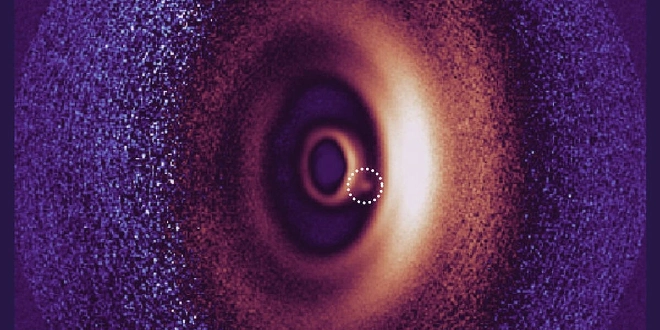An international collaboration of astronomers, including a team from the University of Galway, has announced the discovery of a new planet, named WISPIT 2b. Located roughly 430 light years away, the planet is believed to be around five million years old and is thought to be a gas giant, comparable in size to Jupiter. Its detection offers rare insight into the early stages of planetary formation around stars similar to our Sun.
How the Discovery Was Made
The planet was identified using the European Southern Observatory’s Very Large Telescope (VLT) in Chile’s Atacama Desert. The study, led jointly by Leiden University, the University of Galway, and the University of Arizona, has been published in Astrophysical Journal Letters.
Dr. Christian Ginski, lecturer at the University of Galway and co-author of the study, explained that the team initially conducted short observations of young stars to look for faint light dots signaling planets. Instead, they encountered a striking multi-ringed dust disk around one star. “When we saw this multi-ringed disk for the first time, we knew we had to try and see if we could detect a planet within it,” Dr. Ginski said. Follow-up observations then confirmed the presence of WISPIT 2b.
The discovery was spearheaded by Leiden University PhD student Richelle van Capelleveen, alongside graduate researchers at the University of Galway.
What Makes WISPIT 2b Special
This marks only the second time astronomers have confirmed a planet at such an early evolutionary stage around a Sun-like star. The first, also involving Dr. Ginski, was identified in 2018. WISPIT 2b was captured in near-infrared light, revealing its glowing heat from formation. A team at the University of Arizona later confirmed the planet in visible light, showing it is still accreting gas and actively building its atmosphere.
The surrounding dust disk, often referred to as a planet’s “birth cradle,” spans a radius of 380 astronomical units — about 380 times the Earth-Sun distance. These disks are known for their striking rings and spiral patterns, features thought to emerge from planet formation processes.
A Milestone for Young Researchers
Several University of Galway students described the discovery as both surreal and career-defining. PhD student Chloe Lawlor noted that WISPIT 2b provides “a beautiful example of a planet that can be used to explore current planet formation models.” MSc student Jake Byrne admitted he “could hardly believe it was a real detection” when he first saw the image. Fellow MSc student Dan McLachlan added that the project was “mind-blowing” and praised the department for including students in such groundbreaking work.
Dr. Ginski said the team now hopes to return to WISPIT 2b with even more advanced telescopes to study how it interacts with its environment. He also explained that the planet’s name comes from a Leiden University survey project investigating how planets move around stars of different ages. While the catalogue name is a long number, WISPIT 2b, he noted, is “probably better.”
The discovery underscores not only the pace of progress in exoplanet science but also the vital role of young researchers in advancing our understanding of how planets like Jupiter — and potentially Earth-like worlds — take shape in the cosmos.
 The Daily Star Ireland
The Daily Star Ireland

